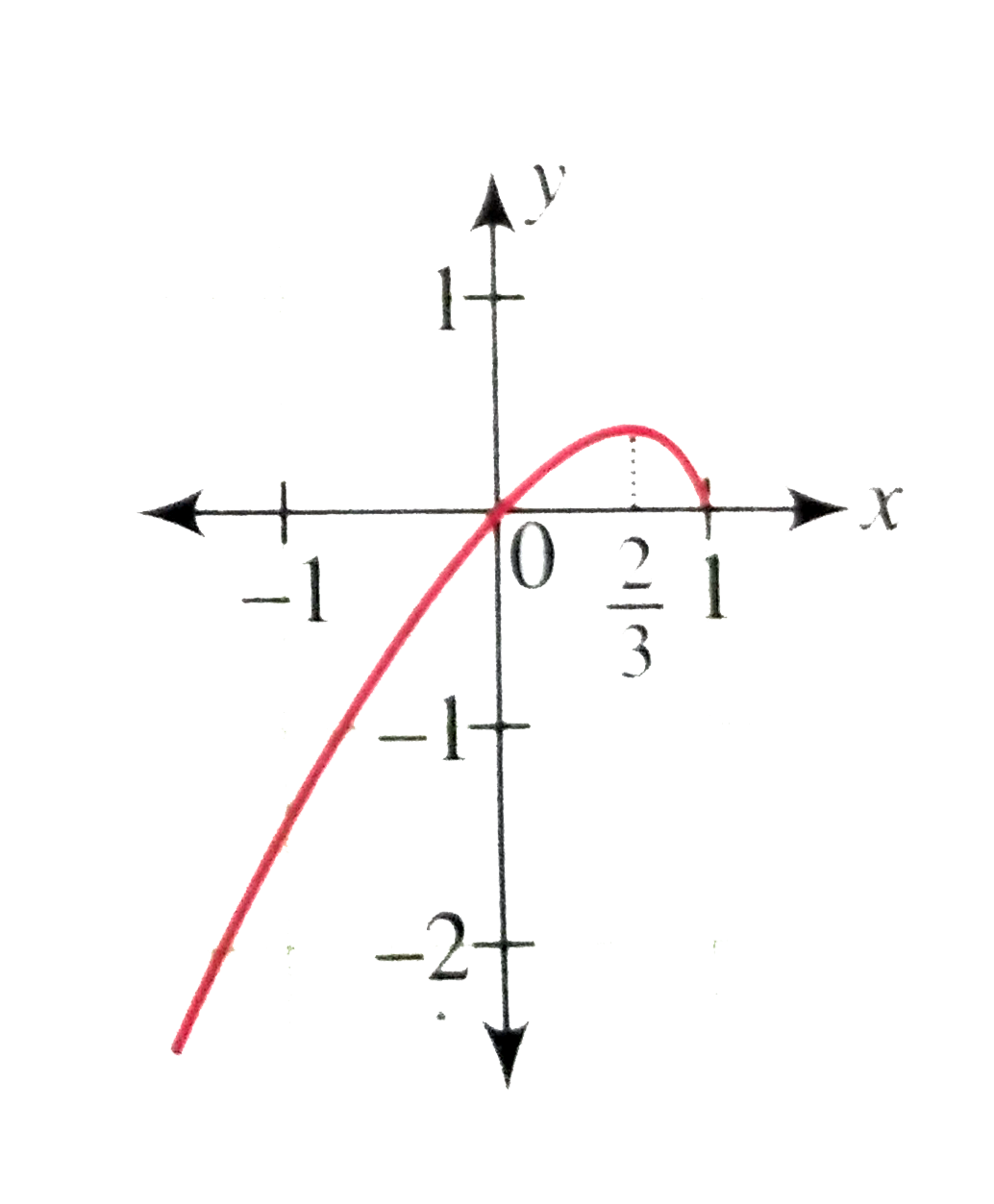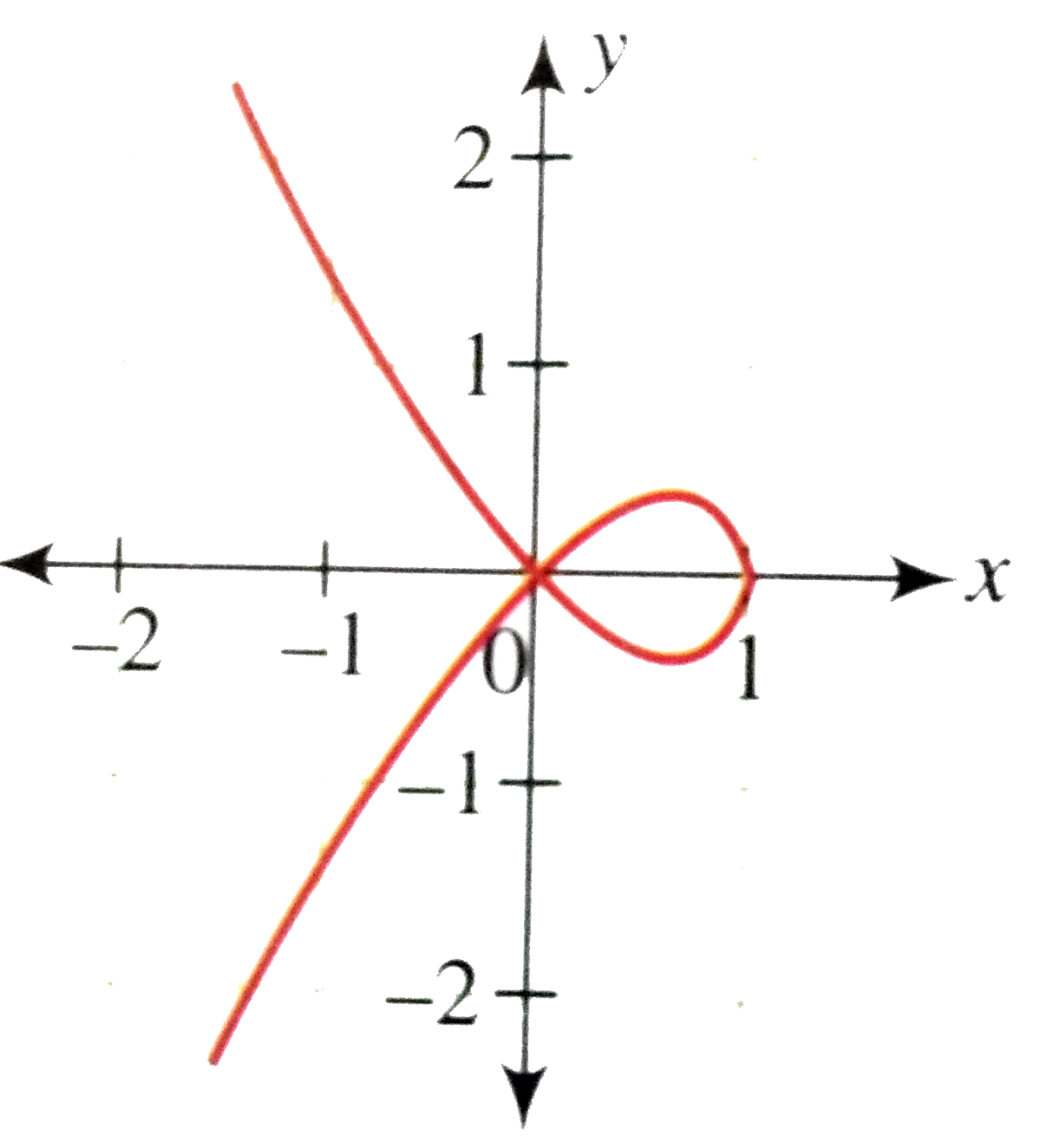InterviewSolution
This section includes InterviewSolutions, each offering curated multiple-choice questions to sharpen your knowledge and support exam preparation. Choose a topic below to get started.
| 3951. |
The ratio of circum radii of a triangle to its pedal triangle is |
|
Answer» `1:2` |
|
| 3952. |
Examine for the rational roots of : (i) 2x^3-x^2-1=0 (ii) x^8-3x+1=0 |
|
Answer» |
|
| 3953. |
The sum of the coefficients of the first three terms in the expansion of (x - 3/x^(2))^(n)x != 0,m being a natural number, is 559. Find the term of the expansion containing x^(3). |
|
Answer» |
|
| 3954. |
Determine whether a**b= axx b("mod" 5) "on" {0,1,2,3,4} operations as defined by * are binary operations on the sets specified in each case. Give reasons if it is not a binary operation. |
|
Answer» Solution :for all `a, B in {0,1,2,3,4}` ` a**b =axxb ("mod"5) in {0,1,2,3,4}` `:. **` is a BINARY operation on the given SET |
|
| 3955. |
Findthe areaof theregionboundedby the parabolay=x^2 +1and thelinesy=x ,x=0 andx=2. |
|
Answer» |
|
| 3956. |
If a geometic series converges which of the following is true about its common ratio r? |
| Answer» Answer :A | |
| 3957. |
Evaluate : int(x^(2)-3x)/(sqrt((x-2)(x-3)))dx. |
|
Answer» |
|
| 3958. |
If phi'(x)=(log_(e )|sin x|)/(x),x ne pi,n in Z and int_(1)^(3) (3log_(e )|sin x^(3)|)/(x)dx=phi(k)-phi(1), then the possible value of k, is |
|
Answer» 27 |
|
| 3959. |
A sample space consists of 4 elements S=(alpha_(1), alpha_(2), alpha_(3), alpha_(4)) Which defines a probability function on S (where" "alpha_(i)capalpha_(j)nephi" "AA" "i nejand cupalpha_(i)=S) |
|
Answer» `P(alpha_(1))=1/2,P(alpha_(2))=1/3,P(alpha_(3))=1/4,P(alpha_(4))=1/5` |
|
| 3960. |
Consider the points A(2, 2) and B(5,3). i. Find the slope of the line through, the points A and B. ii. Find the equation of the line passing through the points A and B. iii. Find the image of the point(1, 2) in the line through A and B. |
|
Answer» |
|
| 3961. |
If A , B are event such that P(A)=0.6, P(B)=0.4 and P(A cap B)=0.2, then find P( A | B^c) |
|
Answer» <P> SOLUTION :`P(A|B^c)=(P(A capB^c))/(P(B^c))=(P(A-B))/(1-P(B))=(P(A)-P(A capB))/(1-0.4)``=(0.6-0.2)/0.6=0.4/0.6=4/6=2/3` |
|
| 3962. |
If the equation (x^(2)-bx)/(ax-c)=(m-1)/(m+1) has roots equal in magnitude but opposite in sign, then m equals |
|
Answer» `(a+B)/(a-b)` |
|
| 3964. |
Let s= x^(2) +y^(2) +2gx +2fy +c=0be a circle with centre O and P = Perpendicular distances from Q to the polar of P with respect to the s =0 q= Perpendicular distance from P to the polar of Q with respect to the circle s= 0 1. (OQ)/( OP) =(p)/(q)for any points P,Q (II)(OQ)/( OP) =(p)/(q)for any points P,Q other than conjugate points , which of them following is correct? |
|
Answer» I TRUE ,II true |
|
| 3965. |
Let I_(1) = int_(a)^(b) (int_(a)^(x) f(t) dt) dx and I_(2) =int_(a)^(b) (b-x) f(x) dx then |
|
Answer» `I_(1) = I_(2)` |
|
| 3966. |
Let f(x) =2 sin x + cos 2x (0 le x le 2pi) and g(x) = x + cos x then |
|
Answer» g is a DECREASING function |
|
| 3967. |
If f(x) and g(x) are continuous and differentiable functions, then prove that there exists c in [a,b] such that (f'(c))/(f(a)-f(c))+(g'(c))/(g(b)-g(c))=1. |
|
Answer» Put c = x `rArr""(f'(x))/(f(x)-f(a))+(g'(x))/(g(x)-g(b))=-1` `rArr""(d)/(dx)log_(E)(f(x)-f(a))+(d)/(dx)log_(e)(g(x)-g(b))=-1` `rArr""d[(log_(e)(g(x)-f(a))(g(x)-g(b))]=-dx` `rArr""(log_(e)(f(x)-f(a))(g(x)-g(b))]=-x+K` `rArr""(f(x)-f(a))(g(x)-g(b))=e^(-x+k)` `rArr""(f(x)-f(a))(g(x)-g(b))e^(x)-e^(k)=0` Now let `H(x)=(f(x)-f(a))(g(x)-g(b))e^(x)-e^(k)` `h(a)=h(b)=-e^(k)` Then by ROLLE's Theorem, there exists atleast one `c in (a,b)` such that `h'(c)=0` `rArr""(f'(c))/(f(a)-f(c))+(g'(c))/(g(b)-g(c))=1` |
|
| 3969. |
If the area of triangle with vertices (2,-6), (5,4) and (k,4) is 35. Then k equal to |
|
Answer» 12 or 2 |
|
| 3970. |
The switching circuit for the statement p ^^ q ^^ r is |
|
Answer»
|
|
| 3971. |
Solvex log x(dy)/(dx) + y = 0 |
| Answer» | |
| 3972. |
Prove that the following. [[a+d,a+d+k,a+d+c],[c,c+b,c],[d,d+k,d+c]]=abc |
|
Answer» SOLUTION :`[[a+d,a+d+K,a+d+C],[c,c+B,c],[d,d+k,d+c]]` `[[a,a,a],[c,c+b,c],[d,d+k,d+c]] (R_1~~R_1-R_3)` `a[[1,1,1],[c,c+b,c],[d,d+k,d+c]]` `a[[1,0,0],[c,b,-b],[d,k,c-k]]` `(C_2=C_2-C_1,C_3=C_3-C_2)` `a[[b,-b],[k,c-k]]` =a(-bk+bc+bk)=ABC |
|
| 3973. |
Two events A and B have the probabilities 0.25 and 0.5 respectively. The probability that both A and B occur simultaneously is 0.14. Find the probability that neither A nor B occurs. |
|
Answer» |
|
| 3974. |
If the 10^(th), 15^(th), 25^(th) term of an arithmetic progression are in geometric progression then thecommon ratio of geometric progression is (common difference of arithmetic progression ne 0) : |
|
Answer» `rArr (T_(15)-T_(25))/(T_(10)-T_(15))=((a+14d)-(a+24d))/((1+9d)-(a+14d))=2` |
|
| 3975. |
int _(0) ^(pi//4) (x ^(2) (sin 2x -cos 2x ))/((1+ sin 2x ) cos ^(2) x) dx |
|
Answer» |
|
| 3976. |
Express the vector vec(r)=4hat(i)+13hat(j)-18hat(k) as a linear combination of the vectors vec(a)=hat(i)-2hat(j)+3hat(k)andvec(b)=2hat(i)+3hat(j)-4hat(k). |
|
Answer» `VEC(R)=2vec(a)+5vec(B)` |
|
| 3978. |
Iftan theta_(1) tan theta_(2)=-(a^(2))/(b^(2))thenthe chord joining two pointstheta_(1) and theta_(2)on the ellipse will subtend a right angle at |
| Answer» Answer :B | |
| 3979. |
Find the area of the region bounded by the curve y - x^(2) + 2, y = x, x = 0 and x = 3. |
|
Answer» |
|
| 3980. |
If a unit vector vec a makes angles(pi)/(3) with hat i , (pi)/(4) with hat j and an acute angle theta with hat k, then find theta and hence, the components of vec a. |
|
Answer» |
|
| 3981. |
A homogeneous differential equation of the form (dx)/(dy) = h(x/y) can be solved by making the substitution.a) y= vxb)v= yxc)x = vyd)x = v |
|
Answer» y = vx |
|
| 3982. |
The three vectors a, b and c with magnitude 3, 4 and 5 respectively and a+b+c=0, then the value of a.b+b.c+c.a is |
|
Answer» `-23` On squaring both SIDES, we get `|a+b+c|^(2)=0` `RARR a^(2)+b^(2)+c^(2)+2(a*b+b*c+c*a)=0` `rArr 2(a*b+b*c+c*a)=-(9+16+25)` `THEREFORE a*b+b*c+c*a=-25` |
|
| 3983. |
Calculate enthalpy change for the reaction C(dimond)+O_(2)(g) to CO_(2)(g) Given: Energy required to break C-C bond in diamond is 350 kJ mol^(-1) DeltaH_(f,O(g))^(@)=250kJ mol^(-1) DeltaH_("atomisation,CO_(2)(g)")^(@)=1500kJ mol^(-1) |
|
Answer» `-300 kJ MOL^(-1)` `=(2xx350+500)-(1500)` `=-300 kJ mol^(-1)` |
|
| 3984. |
If the lines vec r = vec a + lambda (vec b xx vec c) and vec r = vec b + mu (vec c xx vec a) are intersect then ............... |
|
Answer» `vec a xx vec c = vec b xx vec c` |
|
| 3985. |
Find the domain and range of those relations in a which are functions. {(a,a),(b,b),(c,c)} |
| Answer» SOLUTION :RANGE of the FOLLOWING is X. | |
| 3986. |
A discrete random variable X has the probability distribution given as below: (i) Find the value of k (ii) Determine the mean of the distribution. |
|
Answer» |
|
| 3987. |
If Z_(1)" and "Z_(2) are any two complex numbers, then which one of the followoing is true? |
|
Answer» `|Z_(1)+Z_(2)|=|Z_1|+|Z_2|` |
|
| 3988. |
All the words that can be formed using alphabets A, H, L, U, R are written as in a dictionary (no alphabet is repeated). Then the rank of the word RAHUL is |
|
Answer» 70 |
|
| 3989. |
The sum of 100 observations andthe sum of their squares are 400 and 2475 , respectively. Later on three observations 3,4 and 5, were found to be incorrect. if the correct observations are omitted. then the variance of the remainingobservations is |
|
Answer» `8 . 00` |
|
| 3990. |
Let S = {1, 2, 3, 4}. The number of functions f:S to Swhich satisfy the condition f(f(x)) = x AA x in S, is |
|
Answer» 9 |
|
| 3991. |
Draw the graph of the relation y^(2)=x^(2)(1-x) |
|
Answer» Solution :We have `y^(2)=x^(2)(1-x)` `rArr y=+-xsqrt(1-x)` Let us first draw the graph of `y=f(x) = xsqrt(1-x)`. This FUNCTION is defined if `x le1` For `0 ltx le1, y gt0` andfor `x lt 0, y lt 0` Also `y=0 rArr x =0,1` When `x to -INFTY, y to -infty` `f^(')(x) = (1.sqrt(1-x)-x/(2sqrt(1-x)))` `(2-3x)/(2sqrt(1-x))` `f^(')(x)=0 therefore x=2/3`, which is the point of maxima. Thus, graph of the function is as shown in the ADJACENT figure.  To draw the graph of `y=-xsqrt(1-x)`, reflect the graph above the graph in the x-axis. HENCE the graph of the relation `y^(2)=x^(2)(1-x)` is as shown in the following figure. 
|
|
| 3992. |
Calculate whenever possible, [[1,2],[3,4]],[[2],[3]] |
|
Answer» SOLUTION : `[[1,2],[3,4]],[[2],[3]]` `=[[1.2 +2.3],[3.2+4.3]]=[[2+6],[6+12]]=[[8],[18]]` |
|
| 3993. |
Prove that the parabola y^(2)-4ax,(agto) Nearest to the focus is its vertex. |
|
Answer» |
|
| 3994. |
Two coins are tossed once,where E: tail appears on one coin, F: one coins shows head . Find P(E/F) |
|
Answer» SOLUTION :Here S = {HH,HT,TH,TT} |
|
| 3995. |
An urn contains 10 black and 5 white balls. Two balls are drawn from the urn one after the other without replacement. What is the probability that both drawn balls are black ? |
|
Answer» |
|
| 3996. |
f: R - {2/3} rarr R , f(x) = (4x+3)/(6x-4). Prove that (fof) (x) = x , what is about f^(-1) ? |
|
Answer» |
|
| 3998. |
Let RR be the set of real numbers and A={x in RR :-1 lt x lt 1}=B. Is the mapping f: A to Bdefined by f(x)=(x)/(1+|x|) bijective ? Justify your answer. |
|
Answer» |
|
| 4000. |
Find (dy)/(dx) of the functions. x^(y)+y^(x)=1. |
|
Answer» |
|